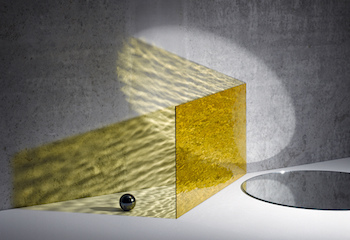Product Description
French “Retro” ring, a large emerald cut citrine (approx. 20 carats TW) set in a geometric 18K gold mounting, signed, c. 1940



French “Retro” ring, a large emerald cut citrine (approx. 20 carats TW) set in a geometric 18K gold mounting, signed, c. 1940
Enrico Serafini (1913-1968) was born in Florence, had a workshop in Piazza Santa Felicità in that city in 1947, and quickly established a successful business creating jewelry for many celebrities of that time, including John Steinbeck and Adlai Stevenson.
ARAM GESAR USA
Venetian Blinds 1979
Ciba-chrome print, maple frame
Signed: 790069, LXXIX (on back)
Framed size: H: 17 9/16” x W: 23 ½”
Price: $24,000
Aram Gesar has been published internationally and has exhibited his photographic work in New York, San Francisco, Zurich and Geneva since 1977. As a producer, art director and photographer, Gesar created advertising campaigns for major corporations in the U.S. and Europe focusing on the fields of travel, banking, financial services, aerospace and motion pictures. He also created and produced documentaries on travel, aviation and yachting for national cable networks and the home video markets and television commercials and corporate programs for various U.S. and European corporations.
Gesar is currently one of the leading international experts on travel and air transport, and the founder and CEO of The Pyramid Media Group, which includes several magazines, newsletters, web sites, books, eBooks and other publications integrating a spectrum of business, travel and aviation content.
